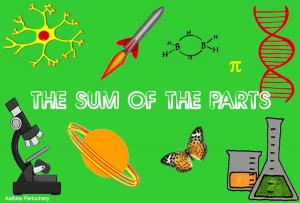The Sum of the Parts

There was a time when a chemist tinkered about with test tubes, a physicist built complex circuits and a biologist dissected frogs. One discovered the chemical composition of matter; the other revealed the properties of electricity and the third unveiled the anatomy of life. Today, these three personalities have progressively amalgamated to form a fourth: the scientist.
When I was an undergraduate science student, physics, chemistry, biology and mathematics were taught as different subjects with different principles and different themes. The questions raised in one area of study in one classroom could never be carried into the next. However, the tendency of new-age science, particularly the life sciences, to use all available forms of experimentation and analysis as opposed to just conventional wet lab techniques is on the rise and it was only after coming to NCBS that I realized how integrated the field of science currently is. For starters, I was astonished to find a theoretical physics laboratory in a biology institute. Core biology questions find answers with the use of fundamental computational methods. Equally novel to me was the presence of a dedicated laser (hitherto undisputed physics equipment) to study protein dynamics. Electrodes which are traditionally inserted into electrochemical cells instead find a home in neuronal cells.
The diversity of science lies not just with the techniques used, but with the users as well. There are a surprising number of students who have switched from non-biology backgrounds to the life sciences and brought their various expertises to apply to biological problems. Students are not the only ones jumping tracks: even faculty members come from diverse backgrounds and each has radically different approaches to dealing with pertinent biological questions. This diversity of specialization is encouraged by initiatives such as the iBio program, an initiative launched by NCBS. The primary aim of the iBio program is to encourage interdisciplinary work by applying to the life sciences principles formerly restricted to other branches like physics or chemistry. To biologists, this is a welcome move: biology today indubitably benefits from such innovations.
But how useful is the interdisciplinary approach? Only time and a more qualified judge will tell. But it seems to me that expanding our arsenal has enabled us to dig deeper into the questions we seek to answer and analyse them from multiple angles. Not only can we see a cell with all its workings, we can also determine the laws that govern those systems and the molecules that enable it. By extension, this level of knowledge paves the way for manipulation. When we know more, we can do more. The 'application quota' of research at NCBS is very high, with forays into nanodevices and tie-ups with hospitals.
My leap from run-of-the-mill biology in college to a multifaceted system of research at NCBS has indeed been an eye-opener to the potential of integrated science.
(Edited by Aathira Perinchery)

Comments
Post new comment